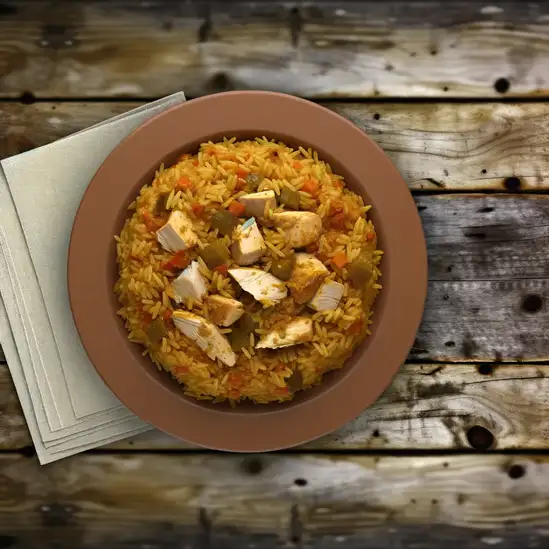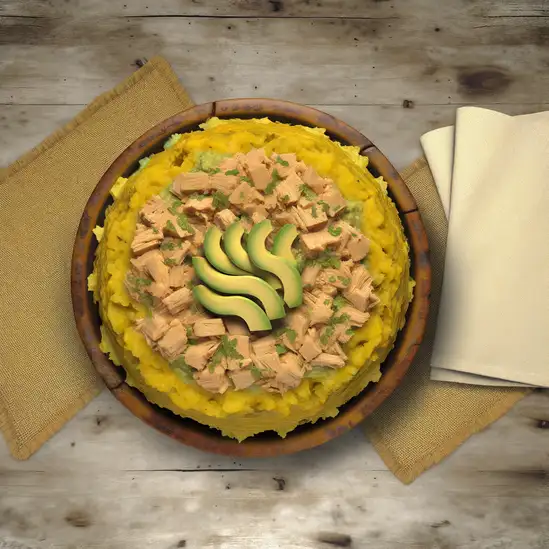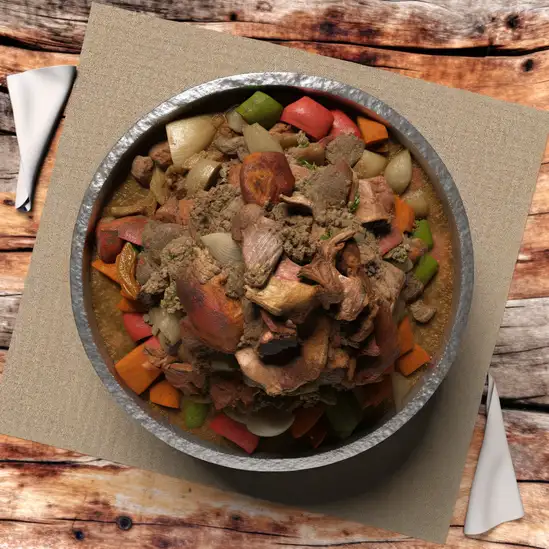



If you find yourself wandering through northern Peru,Chiclayo is a city that instantly wraps you in its warm,lively embrace. There’s a rhythm here that’s both relaxed and vibrant—like the hum of bustling markets blending with the distant crash of Pacific waves. Walking through its streets,you’ll catch the scent of freshly grilled ceviche mingling with the earthy aroma of local herbs and spices,inviting you to taste the region’s rich culinary heritage. The city pulses with a genuine friendliness; locals greet you with easy smiles and a proud sparkle when they talk about their culture. Chiclayo is a gateway to ancient mysteries and colorful traditions. It’s famous for the nearby archaeological treasures of the Moche civilization,but the city itself feels alive with stories. The Mercado Modelo is a sensory feast—vivid textiles,piles of exotic fruits,and the chatter of vendors bargaining with playful energy. At night,the plazas come alive with music and laughter,where you can sip on a sweet chicha morada or sample a spicy anticucho while soaking in the warm desert breeze. What makes Chiclayo truly special is how it balances history and everyday life. It’s not just a stop on a map; it’s a place where the past whispers through ancient pottery and the present dances in street festivals. Visiting here feels like stepping into a story that’s still being written,one filled with warmth,flavor,and a deep connection to the land and its people.
The information on this page is currently being reviewed by Tripkliq and should be used as a guide only
Eng word: Hello
Eng pronunciation: OH-lah
Local language: Hola
Eng word: Goodbye
Eng pronunciation: ah-DYOS
Local language: Adiós
Eng word: Thank you
Eng pronunciation: GRAH-syahs
Local language: Gracias
Eng word: How much
Eng pronunciation: KWAN-toh KWEH-stah
Local language: ¿Cuánto cuesta?
Eng word: Toilet
Eng pronunciation: BAH-nyoh
Local language: Baño
Eng word: Help me
Eng pronunciation: ah-YOO-dah-meh
Local language: Ayúdame
Eng word: Yes
Eng pronunciation: SEE
Local language: Sí
Eng word: No
Eng pronunciation: NO
Local language: No
Eng word: Excuse me
Eng pronunciation: pehr-DOHN
Local language: Perdón
Chiclayo was founded on January 5,1835 by President Felipe Santiago Salaverry.
Chiclayo played a significant role in the Peruvian War of Independence, with several key battles taking place in the region.
Chiclayo is home to the famous archaeological site of Sipán, where the tomb of a Moche warrior-priest was discovered in 1987.
Chiclayo is a major commercial and economic hub in northern Peru, known for its agriculture and trade.
Chiclayo is known for its rich cultural heritage, including traditional music, dance, and cuisine.
One of the most important battles of the War of the Pacific took place in Chiclayo, known as the Battle of Pucará.
Chiclayo has a strong Spanish colonial influence, with many historic buildings and churches dating back to the colonial era.
The Chaparri Ecological Reserve near Chiclayo is known for its conservation efforts for the endangered White-winged Guan.
Chiclayo celebrates the Festival of the Lord of Miracles every October, where devotees participate in processions and religious festivities.
In Chiclayo, the most common Power Adaptor is Type A, Type C.



A traditional Peruvian dish made with rice and chicken, often flavored with cilantro and served with a side of salad.

A cold dish made of mashed yellow potatoes seasoned with lime and aji, typically filled with tuna, chicken, or avocado.

A traditional Andean dish where meat and vegetables are cooked underground with hot stones, often served during special occasions.

A traditional Peruvian drink made from purple corn, flavored with pineapple, cinnamon, and cloves.

A hearty goat stew cooked with cilantro, beer, and spices, served with rice and beans.

A vegetable omelet made with local ingredients, often served as a side dish or light meal.

A comforting hen soup made with vegetables and spices, often served with rice and a hard-boiled egg.
Lima feels like a city that’s constantly humming with life,where the old and new dance together in the most unexpected ways. Walking through its neighborhoods,you’ll catch the salty breeze from the Pacific mingling with the rich aroma of freshly grilled anticuchos (those delicious skewers of marinated meat). The streets buzz with the chatter of locals,the clatter of street vendors,and the distant strum of a guitar from a nearby plaza. It’s a place where colonial architecture stands proudly beside sleek modern buildings,and every corner seems to tell a story.
What really makes Lima special is its food scene—seriously,it’s a paradise for your taste buds. Imagine biting into a ceviche so fresh it practically tastes like the ocean itself,or savoring a perfectly crispy chicharrón sandwich while sipping on a sweet,tangy chicha morada. The city’s markets are alive with vibrant colors:piles of exotic fruits,heaps of fragrant spices,and the lively banter of vendors inviting you to try their goods. It’s a feast for all your senses.
Beyond the food and sights,Lima’s warmth comes from its people. There’s a genuine friendliness here,a pride in their culture that’s infectious. Whether you’re wandering the bohemian streets of Barranco or exploring the historic center,you’ll feel like you’re part of a living,breathing story. Lima isn’t just a stop on your trip—it’s a place that stays with you long after you leave.
Imagine stepping into a place where the Amazon River hums a steady,soothing rhythm and the air is thick with the scent of damp earth and blooming orchids—that’s Iquitos for you. This city feels like a vibrant crossroads between jungle wilderness and lively urban life,where colorful wooden boats bob along the riverbanks and markets overflow with fresh tropical fruits and spices. The streets buzz with a mix of chatter in Spanish and indigenous languages,and the warm,humid air carries the distant calls of howler monkeys and the occasional splash of a river dolphin.
What’s truly captivating about Iquitos is its unique blend of cultures. You’ll find locals who are deeply connected to the rainforest,sharing stories of medicinal plants and ancient traditions,alongside a growing community of artists and musicians who fill the evenings with soulful tunes and laughter. The city’s architecture is a charming patchwork of colonial-era buildings and rustic wooden houses,all painted in bright,cheerful colors that seem to reflect the energy of the place.
When you wander through the bustling markets,the taste of freshly caught river fish grilled over open flames mingles with the sweetness of exotic fruits like camu camu and aguaje. And if you venture just beyond the city,the jungle opens up in all its wild glory—thick canopies,hidden waterfalls,and the chance to spot creatures you’ve only read about. Iquitos isn’t just a destination; it’s an invitation to slow down,breathe deeply,and dive into a world where nature and culture dance together in perfect harmony.
If you ever find yourself in Ecuador,don’t skip Guayaquil—it’s a city that pulses with life and warmth in a way that instantly pulls you in. The moment you step onto the Malecón 2000,the bustling waterfront promenade,you’re greeted by the salty breeze mingling with the scent of fresh ceviche sizzling at nearby stalls. The city hums with a vibrant energy,from the chatter of locals sipping coffee in cozy cafés to the rhythmic clatter of boats along the Guayas River. It’s a place where the tropical sun kisses your skin and the colorful murals tell stories of a rich,resilient culture.
Guayaquil’s character is a blend of old and new,where colonial architecture stands shoulder to shoulder with modern art installations and lively street markets. Wander through Las Peñas,the historic neighborhood,and you’ll feel like you’ve stepped back in time—cobblestone streets,brightly painted houses,and the distant strum of a guitar drifting from a corner bar. The city’s warmth isn’t just in the weather; it’s in the smiles of the people,the spontaneous salsa rhythms spilling from open windows,and the shared joy of a community proud of its roots.
And the food—oh,the food! Imagine biting into a plate of arroz con menestra y carne asada,the flavors rich and comforting,or savoring a sweet,juicy naranjilla fruit fresh from the market. Guayaquil invites you to slow down,soak in its vibrant spirit,and leave with a heart full of stories and a craving to return.
If you ever find yourself wandering through Provincia de Cusco,Peru,get ready to be swept up by a city that feels like a living,breathing tapestry of history and culture. The moment you step into its cobblestone streets,there’s this unmistakable hum—a blend of bustling markets,distant Andean melodies,and the chatter of locals weaving Quechua and Spanish together. The air carries a crispness,tinged with the earthy scent of fresh corn roasting nearby and the faint aroma of eucalyptus from the surrounding hills.
Cusco’s character is a beautiful collision of old and new. Colonial architecture stands shoulder to shoulder with ancient Incan walls,their stones perfectly fitted without mortar,whispering stories of a time long past. You can almost feel the pulse of the city’s rich heritage in every plaza and corner café. Sitting down with a cup of coca tea,watching the world go by,you’ll notice the vibrant textiles and colorful traditional clothing that locals wear with pride,a living testament to their roots.
What really makes Cusco unforgettable is its warmth—the people. They’re proud,welcoming,and eager to share their traditions,whether it’s through a lively festival,a hearty plate of ceviche,or a simple smile. And beyond the city,the breathtaking landscapes of the Sacred Valley and the awe-inspiring Machu Picchu are just waiting to be explored. Cusco isn’t just a place you visit; it’s a place that stays with you long after you’ve left.
A coastal city known for its beautiful beaches like Máncora and its proximity to the Lobos de Tierra Island,a haven for birdwatchers and marine life enthusiasts.
ExploreIf you ever find yourself wandering through northern Peru,Trujillo is a city that wraps you in warmth and history from the moment you arrive. There’s this lively,sun-soaked energy that pulses through its colonial streets,where colorful balconies spill over with bougainvillea and the scent of fresh ceviche mingles with the salty breeze from the nearby Pacific. It’s a place where the past and present dance together—ancient ruins sit just outside the city,whispering stories of the Moche civilization,while locals sip coffee in bustling plazas,chatting animatedly as children play nearby.
Walking through Trujillo,you’ll hear the vibrant rhythms of marinera music drifting from open windows,inviting you to join in the city’s signature dance. The architecture is a feast for the eyes—ornate churches and grand mansions painted in warm earth tones,their facades telling tales of colonial grandeur. At night,the city softens into a cozy glow,and the aroma of grilled anticuchos and sweet pisco cocktails fills the air,tempting you to savor every bite and sip.
What really makes Trujillo special is its genuine,welcoming spirit. The people here carry a deep pride in their culture,from the colorful festivals that light up the streets to the artisan markets where you can find handwoven textiles and intricate pottery. It’s a place that invites you to slow down,soak in the vibrant culture,and feel connected—not just to the city,but to a rich tapestry of history and life that’s alive in every corner.
Scammers install devices on ATMs to steal card information when tourists withdraw money. This is common in busy areas or poorly monitored ATMs.
Tourists are given counterfeit bills or incorrect change when exchanging money at unofficial exchange points or with street vendors.
A group of scammers distracts tourists (e.g., by spilling something on them or asking for help) while an accomplice steals their belongings.
Scammers approach tourists asking for donations for fake charities or causes, often using emotional stories to manipulate them.
Tourists are overcharged or taken on unnecessarily long routes by unlicensed or dishonest taxi drivers. Some may claim the meter is broken and demand inflated fares.
Scammers pose as tour guides offering cheap tours but provide subpar experiences or abandon tourists after taking payment.
Street vendors or shops inflate prices for souvenirs when they see tourists, especially if they appear unfamiliar with local pricing.
Thieves target tourists in crowded areas, markets, or public transportation, stealing wallets, phones, or other valuables.
Peru has strict laws regarding the possession, use, and trafficking of drugs. Possession of even small amounts of illegal drugs can result in severe penalties, including imprisonment. Tourists should avoid any involvement with illegal drugs to avoid legal issues. It is also important to note that drug laws are strictly enforced, and there is little tolerance for violations.
In Chiclayo, Peru, smoking is regulated by national laws that prohibit smoking in enclosed public spaces, including restaurants, bars, and public transportation. There are designated smoking areas in some public places, but it is important to look for signs indicating where smoking is allowed. Violating these regulations can result in fines.
Vaping is subject to similar regulations as smoking in Chiclayo. It is generally prohibited in enclosed public spaces and public transportation. Tourists should look for designated vaping areas and adhere to local rules to avoid fines.
What are other people saying about Chiclayo?
Recent Social posts about Chiclayo
There is nothing to show you for now.